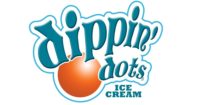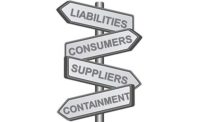The United States is known for some of the highest-volume protein processing operations in the world. Every inch of floor space must yield high productivity while maintaining standards for food quality and plant safety. When new market demands arise, the squeeze is on and plants must quickly transition to remain competitive. New cryogenic technology is often the answer.
On the demand side, retail and quick-service food operations are one of the primary drivers for growth. Fast-food chains and national casual dining restaurants are gobbling up portion-sized marinated poultry entrées and breaded products. National chain sandwich shops are also demanding more marinated products, as well as precision-sliced deli meats, plus soups with flavorful diced proteins. At the same time, convenience stores are adding mega-delis to satisfy hungry travelers. All this competition, of course, means a constant squeeze on costs all the way back up the “food chain.”
Much of this squeeze is offset by higher-value products. At the heart of all this competition are busy middle-class consumers who have little time to prepare meals yet desire quality and convenience at home with time-saving quick-frozen dinners and mouth-watering prepared foods that can go from freezer-to-microwave-to-table and taste “just like home.”
On the production side, these trends mean more dicing, slicing, forming, marinating, stitch-injecting and breading. And, the higher the production rate, the greater the need for cryogenic technology. In fact, liquid carbon dioxide (CO2) or nitrogen (N2) is the “gold standard” in chilling and freezing efficiency. Recent breakthroughs and technology know-how from Linde, Murray Hill, N.J., are helping to relieve plants feeling squeezed by growing volume demands, cost and quality expectations and limited floor space.
Plants with mechanical freezing systems or even cryogenic equipment just a few years old can use cryogenic solutions to boost production thousands of pounds per hour and often in a smaller footprint.
Cryogenic improvements are not solely based on a unit basis, but also yield and product quality. Consider that a mechanical freezer operating at minus 40oF will produce dehydration losses on a fully cooked protein product from 6-10%, depending on the type of protein, moisture content, time to freeze, temperature target and the size and shape of the product. In 10 linear feet, Linde can typically increase yield by 4-6% for about a penny per product, sometimes less.
That kind of improvement can quickly add up. For protein products that are stitch-injected, marinated or glazed, cryogenic solutions can achieve those same yield improvements through better moisture retention, just by crust freezing the outer layer or by setting it up for glazing. Depending on the product, even if yield is improved by just 1-2%, that can correlate to $500,000 to $1 million per line per year in operating cost savings.
On a raw hamburger product typically not high in moisture such as formed patties, the dehydration loss with a mechanical freezer is on the order of 0.5%. In contrast, the impingement freezer, which injects cryogen at -320oF, can typically limit dehydration losses to about 0.10%. For a meat or poultry processor running hundreds of thousands of pounds per day, the monetized dollar gain is huge.
Production managers tell us that improvements through higher throughput and higher yield are paramount, and that is closely followed by operating costs. At the end of the day, cost savings are in the details. The art in cryogenic technology is in how you apply it from an engineering perspective. It is about airflow inside the freezer and how you use the BTUs in the various phases of the cryogen to maximize efficiency. And, it is about matching cryogenic technology to the food product and the existing plant production process to maximize the investment.
For more information, visit www.lindefood.com, or call 800-755-9277.




